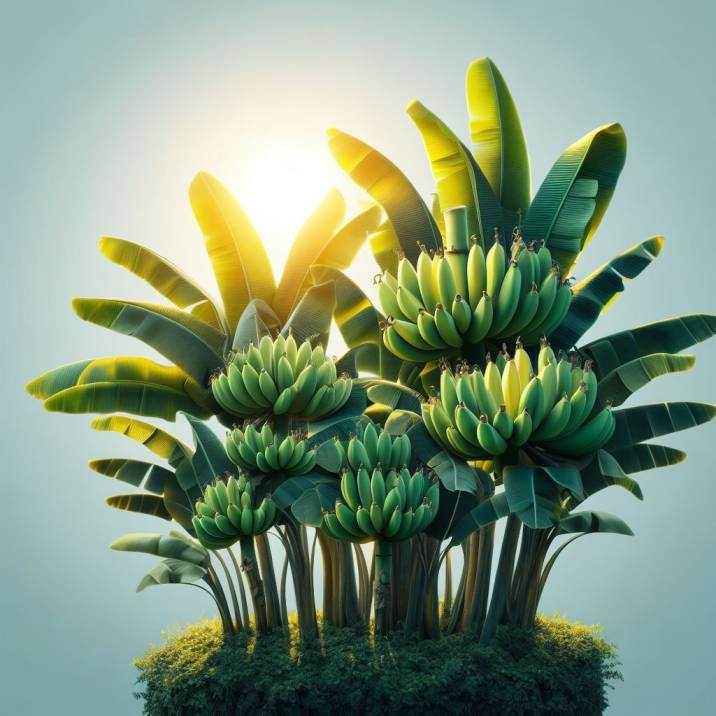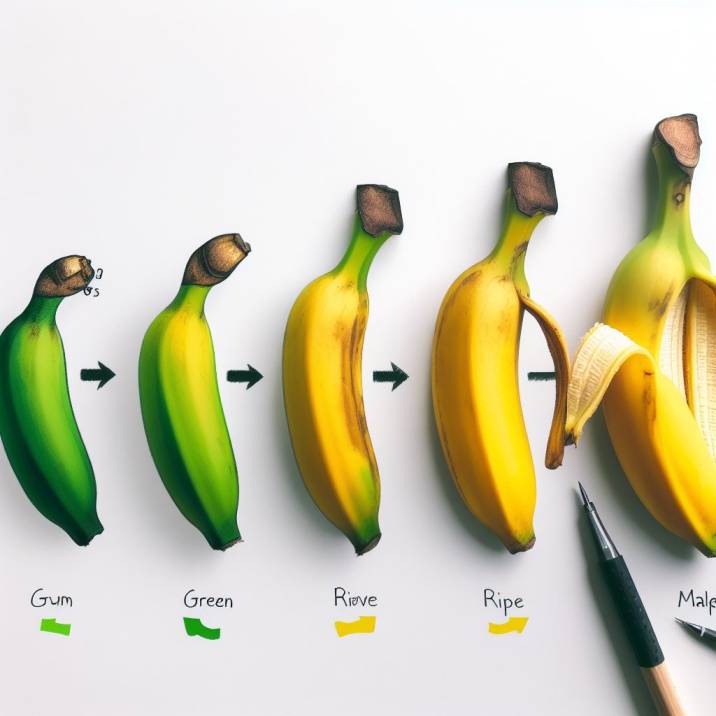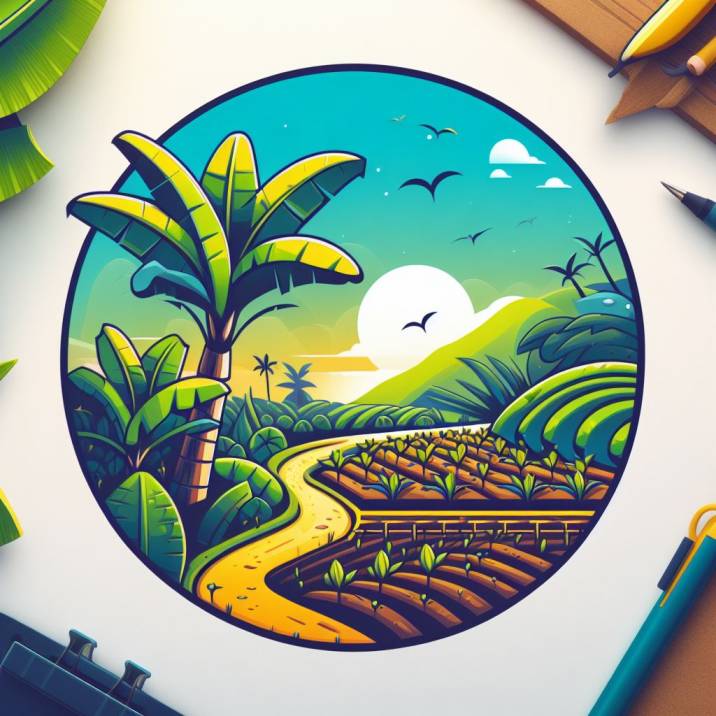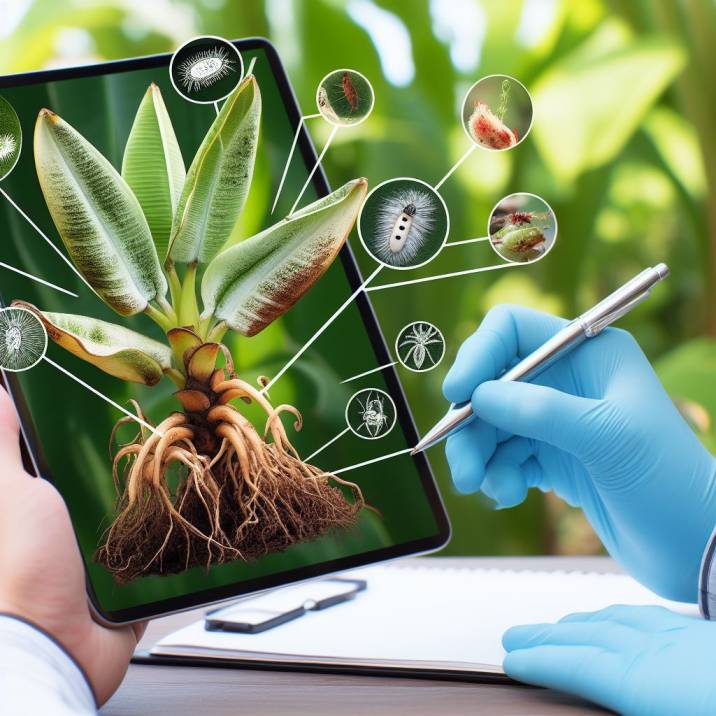Baby banana plants, scientifically known as Musa acuminata ‘Dwarf Cavendish,’ are remarkable creations of nature. These miniature marvels not only add a touch of tropical beauty to your garden but also produce some of the sweetest, pint-sized bananas you’ve ever tasted. Despite their small stature, baby banana plants boast a fascinating array of characteristics that set them apart from their larger banana relatives. In this comprehensive guide, we will explore the world of Baby Banana Plant Characteristics, covering everything from their botanical description to their cultural requirements, pests and diseases, propagation methods, and more. By the end of this article, you’ll be well-equipped to nurture and appreciate these charming plants.
I. Botanical Description
Table of Contents
Our journey into the enchanting world of baby banana plants begins with a look at their botanical description. Understanding their scientific classification and taxonomy is the first step in appreciating their unique features.
Baby banana plants belong to the Musa genus, a group of flowering plants in the family Musaceae. These plants are scientifically classified as Musa acuminata ‘Dwarf Cavendish.’ This nomenclature identifies the specific species and variety to which baby banana plants belong.

II. Plant Size and Growth Habit
One of the most striking characteristics of baby banana plants is their small size. Unlike their towering relatives that can reach heights of up to 20 feet or more, baby banana plants are more modest in stature. Typically, they grow to a height of 3 to 4 feet, making them ideal for small gardens, patios, or even indoor cultivation. Their growth habit is upright and compact, with a tight cluster of leaves that creates a pleasing aesthetic. The pseudostem, which is not truly a trunk but rather a structure formed by tightly packed leaf bases, provides stability and support to the plant.
III. Leaf Characteristics
The leaves of baby banana plants are a defining feature that contributes to their overall appeal. These leaves are large, broad, and typically bright green in color. Measuring between 2 to 4 feet in length and 1 to 2 feet in width, the leaves are visually striking and have a smooth, waxy texture. Their shape is distinctly elongated and oval, setting them apart from other ornamental plants in your garden.
IV. Trunk and Pseudostem
Despite their non-woody nature, baby banana plants feature a substantial pseudostem that resembles a trunk. This pseudostem consists of tightly packed leaf bases that create the appearance of a sturdy, upright structure. While not true wood, this pseudostem is a critical element in the plant’s growth and stability. It serves as the central pillar supporting the lush canopy of leaves and, eventually, the fruit.
V. Inflorescence and Flower Characteristics
One of the most captivating aspects of baby banana plants is their inflorescence and flowers. Baby banana plants produce compact, pendulous inflorescences that emerge from the center of the plant. These inflorescences, also known as flower spikes, are cone-shaped and contain multiple clusters of tiny flowers.
The individual flowers are small and tubular in shape, with colors that range from pale pink to creamy white. Interestingly, baby banana plants are hermaphroditic, meaning they produce both male and female flowers on the same plant. This unique feature promotes successful pollination and the development of fruit.
VI. Fruit Development
The pinnacle of a baby banana plant’s existence is the production of its delightful, miniature bananas. These bananas start as small, green fingers and gradually mature into a vibrant yellow when ripe. Characterized by their sweet, creamy flesh and unique flavor, baby bananas are a true delight for your taste buds.
Baby bananas are typically harvested when they reach a length of approximately 4 to 6 inches. The moment they turn from green to yellow is a sign of ripeness and readiness for consumption. Whether you eat them fresh from your garden or incorporate them into culinary creations, baby bananas are sure to charm your palate.

VII. Cultural Requirements
Successfully cultivating baby banana plants requires a good understanding of their cultural requirements. These requirements include ideal environmental conditions, suitable soil, and proper care practices.
1. Temperature: Baby bananas thrive in tropical and subtropical regions where temperatures remain consistently warm. The ideal temperature range for their growth is between 75°F to 85°F (24°C to 29°C). While they can tolerate occasional drops in temperature, prolonged exposure to cold can damage or kill the plant.
2. Sunlight: Baby banana plants are sun-worshippers, requiring approximately 10 to 12 hours of direct sunlight daily for optimal growth. Place them in a location with plenty of sunlight, or consider supplemental lighting for indoor cultivation.
3. Soil: Well-drained, loamy soil with good moisture retention is essential for baby banana plants. The pH level of the soil should ideally be slightly acidic to neutral, with a range of 6.0 to 7.0 for optimal growth.
4. Water: Proper watering practices are critical. Baby banana plants prefer consistent moisture but are sensitive to waterlogged soil, which can lead to root rot. Ensure the soil is kept consistently moist, but not soggy.
5. Fertilization: Provide balanced, slow-release fertilizer to nourish your baby banana plants. A high-potassium (potash) fertilizer is particularly beneficial for fruit production.

VIII. Pests and Diseases
Like all plants, baby banana plants are susceptible to certain pests and diseases that can impact their health. Being vigilant and practicing good care habits can help prevent and manage these issues.
Common Pests:
- Aphids: These tiny, soft-bodied insects can congregate on the undersides of leaves and feed on plant sap. They can be controlled with insecticidal soap or by introducing natural predators like ladybugs.
- Mealybugs: Mealybugs are small, cottony insects that can affect baby banana plants. Use a soft brush to remove them or apply insecticidal soap.
- Spider Mites: These tiny arachnids feed on plant juices and create fine webbing on leaves. Frequent misting can help prevent infestations.
Common Diseases:
- Panama Disease: A soil-borne fungal disease that can affect banana plants. Preventative measures, such as maintaining proper soil drainage, are key to managing this disease.
- Fungal Diseases: Baby banana plants can also be vulnerable to various fungal diseases. Ensuring good air circulation and proper watering practices can help prevent these issues.

IX. Propagation Methods
Understanding how to propagate baby banana plants is essential if you wish to expand your collection or share these charming plants with fellow enthusiasts. Baby banana plants can be propagated using several methods, each with its unique advantages:
1. Offsets: Baby banana plants naturally produce offsets, or “pups,” at their base. These offsets can be carefully separated from the parent plant and replanted.
2. Tissue Culture: Micropropagation or tissue culture is another method for propagating baby banana plants on a large scale. It involves growing plantlets from small tissue samples.
3. Division of Suckers: Suckers are new shoots that emerge from the base of the plant. They can be detached and transplanted, creating new baby banana plants.
Propagation allows you to increase your collection, share the joy of gardening, and experiment with different growing conditions.
Table: Baby Banana Plant Varieties and Characteristics
| Variety | Characteristics |
|---|---|
| Dwarf Cavendish | – Compact size (3-4 feet) – Sweet, creamy fruit |
| Super Dwarf Cavendish | – Smaller than Dwarf Cavendish – Sweet fruit |
| Dwarf Red | – Compact size – Reddish pseudostem – Sweet fruit |
| Dwarf Brazilian | – Unique flavor – Ideal for containers |
| Others | – Explore a wide range of other varieties and hybrids |
Conclusion
Baby banana plants are more than just charming additions to your garden. They are nature’s tiny delights, offering a unique combination of petite size, captivating flowers, and delectable fruit. Their botanical description, growth habits, and cultural requirements make them a fascinating addition to your horticultural endeavors. As you cultivate and care for your baby banana plants, you’ll have the pleasure of witnessing the growth of both your garden and your taste buds. So, go ahead, embrace the enchanting world of baby banana plant characteristics, and let these small wonders bring a touch of the tropics to your life. Happy gardening!
XI. Frequently Asked Questions (FAQs)
1. Can I grow baby banana plants indoors?
- Yes, baby banana plants can be cultivated indoors, provided they receive sufficient sunlight. Place them near a sunny window or use artificial lighting to meet their sunlight requirements.
2. How long does it take for baby bananas to ripen?
- Baby bananas typically take approximately 60 to 75 days from flowering to ripening, depending on environmental conditions and their unique baby banana plant characteristics.
3. Can baby banana plants be grown in pots or containers?
- Yes, they can be grown in containers. Make sure the pots are large enough to accommodate the plant and provide adequate drainage while considering their distinctive baby banana plant characteristics.
4. Do baby banana plants produce fruit year-round?
- While baby banana plants can produce fruit year-round in ideal conditions, they may have specific fruiting seasons depending on their location and the baby banana plant characteristics that influence fruiting.
5. What are the primary pests that affect baby banana plants?
- Common pests, which can impact the overall baby banana plant characteristics, include aphids, mealybugs, and spider mites. Regular inspection and appropriate pest control methods can help manage infestations.
6. How can I protect my baby banana plants from fungal diseases while preserving their unique baby banana plant characteristics?
- To prevent fungal diseases that could affect baby banana plant characteristics, maintain good air circulation, avoid overwatering, and use fungicides when necessary. Proper sanitation is also important to safeguard these distinctive features.
7. What is the average yield of baby banana plants, given their specific baby banana plant characteristics?
- A healthy baby banana plant, with its distinct baby banana plant characteristics, can produce several bunches of bananas throughout the year, providing a continuous supply of these delectable fruits.
8. Can I plant baby banana plants in my backyard in a temperate climate, considering their unique baby banana plant characteristics?
- Baby banana plants thrive in tropical and subtropical regions. In temperate climates, they can be grown outdoors during the warm months but should be protected from cold temperatures in the winter, considering their specific baby banana plant characteristics.
